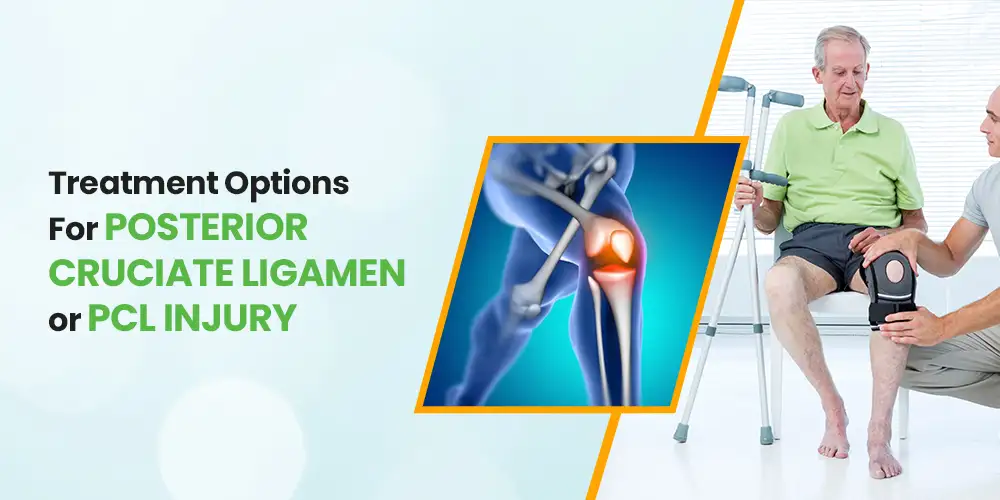There can be multiple types of Ligament damage, of which PCL injury or tear remains the least common option. While most people suffer from ACL injury, incidences of damaged Posterior Cruciate Ligament remain common among athletes and soccer players.
Compared to ACL, PCL is a stronger ligament and thus rarely gets damaged. But if damaged, immediate detection and careful treatment can cure the problem. People suffering from this ligament tear may or may not walk depending on the severity of the damage.
However, the feeling of pain around the knee area remains a common discomfort for all patients with damaged PCL.
What Are the Types Of PCL Injury
Based on the extent of the damage, PCL tearing can be of any of the following categories.
- Grade 1 Injury: This refers to mild damage which does not severely impact weight-bearing capacity of your legs.
- Grade 2 Injury: This damage refers to moderate injury. In this case, the knee of the sufferer might get unstable at times. This grade denotes a partial tear.
- Grade 3 Injury: In this case, the ligament gets entirely torn or disassociated with the bone. The sufferer will face difficulty walking and experience excruciating pain.
- Grade 4 Injury: Grade 4 injury refers to a situation where the posterior cruciate ligament gets torn along with another ligament.
No matter the extent of damage, PCL injury treatment can help you overcome the difficulties over time.
Causes of PCL Injury
The common causes of PCL damage are as follows.
- When you fall onto a twisted knee
- If you receive a hard blow on the front side of your knee
- If you try to bend your knee backwards
- If by any chance the knee gets dislocated
- When you land after jumping awkwardly
All these situations may arise due to several reasons. It could be a car accident, an accidental fall down the slopes of a mountain while trekking, or accidental falls during sports practice.
Although the reason doesn’t matter, once detected, you need to opt for any of the available modern treatments for mending the PCL damage.
Symptoms of PCL Damage
The primary symptoms of PCL damage remain the following ones.
- Pain that intensifies over time
- Swelling & inflammation
- Instability of the knee
- Stiffness and restricted movement
- Difficulty in walking
- Trouble descending the stairs
All these symptoms might indicate you need a PCL tear treatment.
Diagnosis of PCL Tear
Diagnosing this condition is easy. Once the symptoms surface, the patient should immediately get in touch with an expert doctor. The following methods are common for detecting PCL damage.
- MRI
- CT scan
- X-Ray
Once detected, based on the severity of the damage, the doctor will suggest PCL surgery or alternative treatment processes.
PCL Tear Treatment – Nonsurgical and Surgical
PCL treatment can be of various types. Broadly, it could be either nonsurgical or surgical. Here is how the treatment procedure advances to help you recover completely.
Nonsurgical Treatment
If the damage is not severe, the nonsurgical methods are generally enough to help the wound heal. For such injuries, surgical intervention remains unnecessary. This nonsurgical method of treatment follows a RICE method which includes the following steps.
- Rest: Once detected, the patient should avoid running or walking and take adequate rest to let the injury heal.
- Ice: To reduce the swelling and pain around the knee area, sufferers can topically apply ice. This method also hastens the recovery process.
- Compression: If the swelling is considerable, the patient can keep a bandage wrapped around the knee to exert compression on the affected area. This can help in reducing swelling effectively.
- Elevation: Another way to keep swelling under control can be to let the knee rest at an elevated position compared to the waist.
Besides following these elementary steps, people suffering from mild to moderate ligament tears can also try a few more remedies.
- Knee Braces: The patient can wear knee braces to keep the affected area well-supported.
- Crutches: People with grade 1 or 2 PCL tears can use crutches to walk within the home.
- Drugs: Pain-relieving drugs which are not steroids can be useful for this condition.
- Therapy: To enhance flexibility, mobility, strength, and balance, you can consult a physical therapist once the swelling and pain subsides.
Surgical Treatment
PCL surgery is necessary for those who have grade 3 or 4 injuries. Both grades denote that the patient has severe damage and need more than rest and care.
This process of PCL treatment involves the regeneration of the ligament. Expert surgeons follow the two methods mentioned below for this task.
Autograft: This process refers to grafting the damaged ligament with the help of the tissues of another ligament or tendon of the body. Oftentimes, the surgeons collect these tissues from the Patellar Tendon.
Allograft: Sometimes, the surgeons collect these tissues required to regenerate the damaged ligament from a donor’s body. This process refers to allograft.
This is a minimally invasive surgical process. Therefore, the recovery time for this method remains quite low. The expert surgeons insert a tiny camera into the knee through a small incision and carry out the rest of the surgery through advanced instruments.
For PCL injury treatment, Golden Clinic and Golden Hospitals can be dependable places for wholesome treatment. This healthcare facility has the top arthroscopy surgeons treating patients with PCL damage and other orthopaedic troubles.
Especially for those who indulge in vigorous sports training and athletic practices, ligament injuries remain a common trouble. For complete and fast recovery you can rely on this clinic’s advanced medical facilities.

